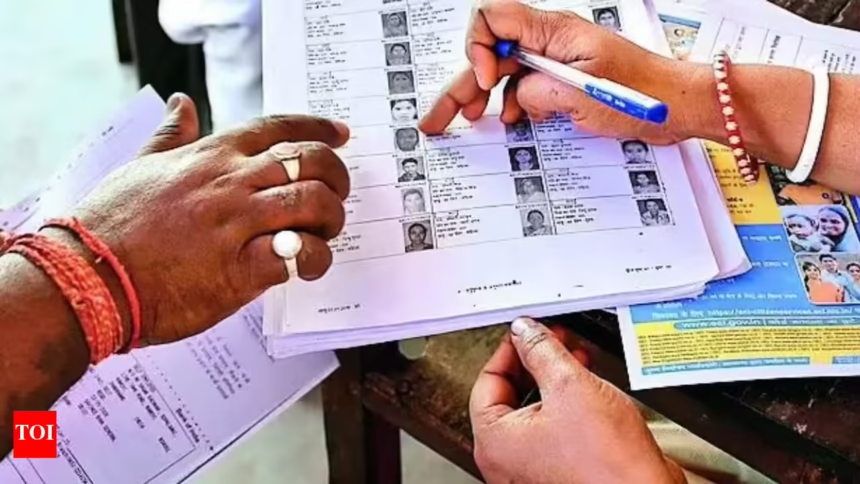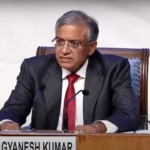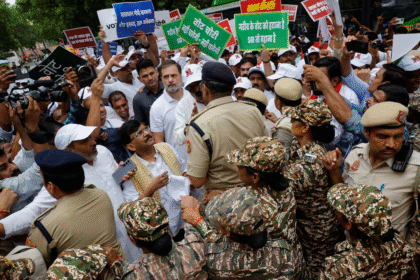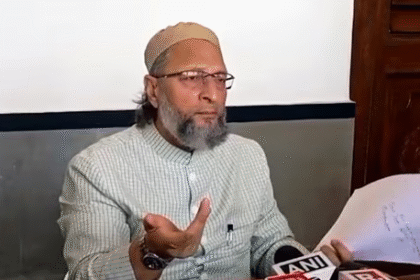EC’s Voter Roll Revision in Bihar Clashes with 2003 Precedent, Records Show
New Delhi: The Election Commission of India’s (ECI) defence of its ongoing Special Intensive Revision (SIR) of Bihar’s electoral rolls is facing scrutiny, as an analysis of the very 2002-03 exercise it held up as a benchmark reveals significant contradictions in timelines, citizenship verification and the role of the voter ID card.
The ECI has justified the compressed 97-day schedule for the 2025 revision and its stringent documentation requirements in an affidavit to the Supreme Court, where the process is being legally challenged. However, an investigation by The Indian Express, citing records and former ECI officials, indicates that the last intensive revision was a far longer and more inclusive process.
The discrepancies are at the heart of petitions before the Supreme Court, which argue the current three-month window is unreasonably short for a state headed to the assembly polls, and that the ECI is overstepping its mandate by delving into nationality questions.
The points of contention that emerge when comparing the “then” and “now” of the revision process are stark.
A tale of two timelines
The most significant difference lies in the duration allotted for the complex task. The ECI’s affidavit dismisses concerns over the current timeline as “misconceived, erroneous and unsustainable,” highlighting that the door-to-door enumeration period is comparable to the one in 2002-03.
While this is factually correct for that specific phase, it omits the broader context. The 2002-03 revision, which was also implemented in six other states including Jharkhand, Uttarakhand, Uttar Pradesh, Madhya Pradesh, Chhattisgarh and Punjab, spanned a total of 243 days – roughly eight months – from May 2002 to its final publication in January 2003.
This included a 74-day preparatory period for training, surveys and rationalising polling booths, followed by distinct periods for data entry, claims and objections.
In sharp contrast, the entire 2025 SIR has been compressed into just 97 days. The initial phase of training, booth rationalisation, and house-to-house enumeration is packed into a single 31-day window.
According to a retired ECI official involved in the 2002-03 exercise, the previous, longer schedule allowed for a more thorough and less hurried process.
Citizenship proof: A shift in stance
A cornerstone of the ECI’s legal defense is its argument that electors on the rolls since the 2003 revision can be presumed citizens, as that process provided “probative evidence of eligibility.” However, officials who oversaw that revision recount a different reality.
According to a former Chief Electoral Officer associated with the 2002-03 revision, enumerators then were not instructed to seek proof of citizenship from existing electors. Their primary role was to verify age and ordinary residence. The ECI’s own instructions at the time limited citizenship checks to two specific scenarios: for first-time applicants where the Electoral Registration Officer (ERO) had doubts, and in specific areas flagged by the state government for having a substantial presence of foreign nationals. Even in these sensitive areas, existing electors were not required to produce documents to prove their citizenship.
This stands in contrast to the current process, which has raised concerns that the ECI is effectively conducting a citizenship verification drive, a task petitioners argue is beyond its constitutional mandate.
The role of voter ID card
The status of the Elector’s Photo Identity Card (EPIC) represents another major divergence. During the 2002-03 revision, the EPIC was the “backbone of verification,” according to a former state CEO. Enumerators were explicitly instructed to ask for the card at every household and use it to match and correct details on the electoral list.
Two decades later, the Commission’s position has reversed. In its affidavit, the ECI rejected the Supreme Court’s suggestion to accept the EPIC as proof of eligibility, arguing that since the revision constitutes a de novo (from scratch) preparation of the roll, relying on EPIC cards, which are based on the very rolls being revised, would “make the whole exercise futile.”
The ECI has maintained that a special revision is necessary to clean up electoral rolls, citing significant changes due to urbanisation, migration and the presence of duplicate entries – an issue also flagged by political parties.
The Supreme Court is scheduled to resume hearing the matter on Friday, August 22, where these historical precedents are expected to be a central point of discussion.
Also Read: Fall of Democracy’s Last Bastion: Election Commission as the BJP’s Strategic Shield








